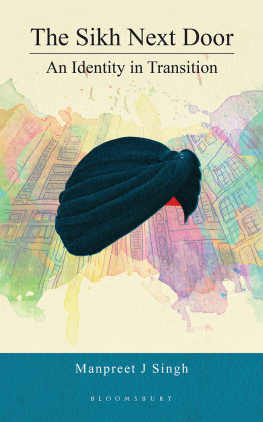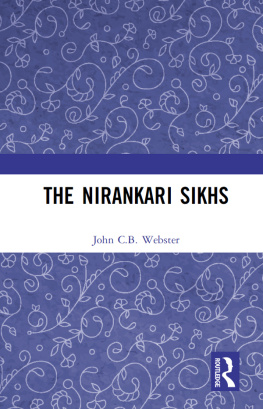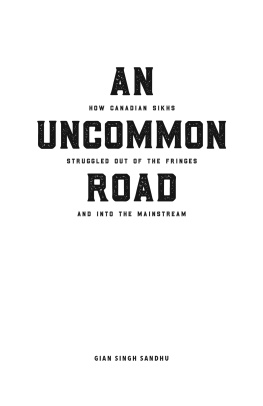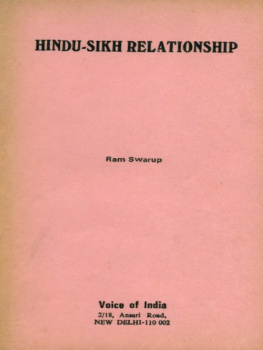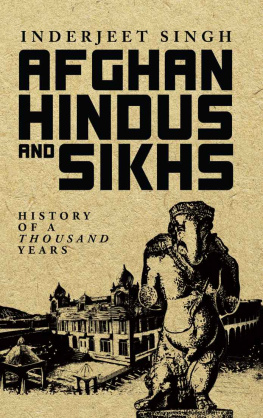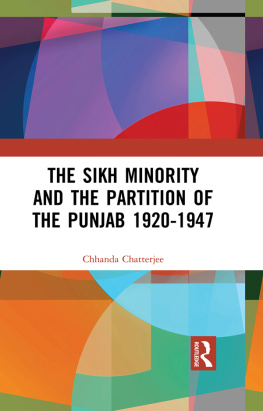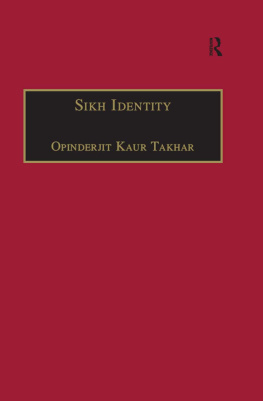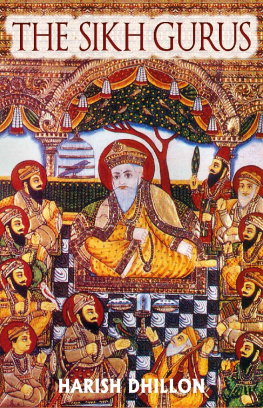
The Sikh Next Door
The Sikh Next Door
An Identity in Transition
MANPREET J. SINGH

BLOOMSBURY INDIA
Bloomsbury Publishing India Pvt. Ltd
Second Floor, LSC Building No. 4, DDA Complex, Pocket C 6 & 7,
Vasant Kunj New Delhi 110070
BLOOMSBURY, BLOOMSBURY ACADEMIC INDIA and the Diana logo are trademarks of
Bloomsbury Publishing Plc
First published in India 2020
This edition published 2020
Copyright Manpreet J. Singh, 2020
Manpreet J. Singh has asserted her right under the Indian Copyright Act to be identified as Author of this work
Bloomsbury Academic
An imprint of Bloomsbury Publishing Plc
All rights reserved. No part of this publication may be reproduced or transmitted in any form or by any means, electronic or mechanical, including photocopying, recording, or any information storage or retrieval system, without prior permission in writing from the publishers
Bloomsbury Publishing Plc does not have any control over, or responsibility for, any third-party websites referred to or in this book. All internet addresses given in this book were correct at the time of going to press. The author and publisher regret any inconvenience caused if addresses have changed or sites have ceased to exist, but can accept no responsibility for any such changes
ISBN: HB: 978-93-89165-56-2; eBook: 978-93-89165-58-6
2 4 6 8 10 9 7 5 3 1
Created by Manipal Digital
Bloomsbury Publishing Plc makes every effort to ensure that the papers used in the manufacture of our books are natural, recyclable products made from wood grown in well-managed forests. Our manufacturing processes conform to the environmental regulations of the country of origin.
To find out more about our authors and books visit www.bloomsbury.com and sign up for our newsletters
To Jai Jeet
His acute awareness of loss as a descendant of Sikh parents displaced during Partition, his alienation as the only turbaned boy in a school in Bihar, his early recognition that he did not belong in Punjabthe promised land, his discomfiture at being slotted into a type which he was not, his obsession with rooting himself through Gurmukhi language, Punjabi literature and music, are important strains underlying this work.
One way to avoid the hazards of rigidifying aspects of identity into a misleading categorical entity is to incorporate into the core conception of identity the categorically destabilising dimensions of time, space and relationality.
Margaret R. Somers
Contents
When I talk of the Sikh next door, I mean one of the many you might encounter in everyday, normal, routine urban life. As individuals, they are different from the images associated with themas obvious as the fact that those images still colour perceptions about them in stubborn ways. The purpose of this work is to look at the people behind those images by unhinging understanding from opinions already formed. It is to probe into who they are, how they are influenced by different pasts, and how that impacts their social stances in the present. It is to know the trajectories, which have broken and built them as a people, to discover the histories that have gone into the building of their identity and to understand the nuances of their engagement with the world around them.
Making this analysis has been a delicate process for it has involved a constant interplay between us as the community understands itself, and the they that is used to describe it from the outside. The baggage of the past continues to hang heavy at both ends, as do the very different narratives built on either side. There have been other factors too, like these narratives excluding important facets, or sustaining some despite their incongruence with lived reality. To make an analysis that fills these blanks, one that bridges the gaps with a story that remains true from either perspective, has been a challenging one.
The journey began with a senior fellowship from the Indo-Canadian Studies Centre, University of Mumbai, funded by the British Columbia province, through the University of Frazer Valley, British Columbia (Canada). The idea was to bring into focus the Sikh community in the centenary year of the Komagata Maru incident of 1914, when Indians, majorly Sikhs from British India, attempted to emigrate to Canada and were denied entry. For me, it was an unusual opportunity to make a concerted and academic analysis of an identity I have personally lived. While that particular project dealt with Sikh identity in British Columbia, the research, once initiated was a roller-coaster ride leading to much more. One aspect which intrigued me was a heavy bent of the existing work towards the religious and political identity of the Sikhs. There was much lesser focus on their social identities or the shifts in them. Although one cannot dissociate one from the other, a lack of balance does create a stilted view.
As someone placed at a vantage point which has given me access to otherwise disparate and isolated narratives within the Sikh social life, it seemed particularly so. As an offspring to parents from two very different groups within the homogenous Sikh identity, as someone who has lived both within community hubs and outside and felt acutely the difference between the community self-image and the one constructed by others, I saw crucial bits missing. During my research, I delved into socio-historical trajectories and broader community patterns within which these personal experiences are rooted. It helped scratch amnesiac patches in community narratives and those generated outside it. It also revealed gaps in understanding arising from perceptions caught in inertia and a people changing with time.
My apprehensions before venturing into this study were real. There was the oft-repeated danger of an insiders view. Would I lose objectivity while working on areas that have had a bearing on my own life? Or would my training as a researcher help me maintain a distance and allow an overview? It has been a journey through the unwieldy terrain of memories, observations, emotions, losses woven into the mental make-up, apprehensions inherited and experienced. It has also been one of pitting all this against research validated through systems and intellectual scrutiny, of using it to question narratives, and of resisting the pressure of expectation. This work has passed through innumerable revisions, till I found the blanks filling with cogent answers. Retrospectively, I feel that it is the insider perspective that has helped identify many of these blanks lying dormant within the folds of community experience.
The prospect of making the leap from literature, my core field, to a topic which flirted with history, sociology and even psychology, had seemed daunting too. However, as I proceeded, I realised that it is human stories which make the foundation of all disciplines. A background in literature has helped me to process data and theory into a lived human experience. As I have traced trajectories to the many facets of contemporary Sikh identity, an anchoring in literature has helped me construct the present as an organic outgrowth of the past. It has also made it easier to analyse Sikh experience as it emerges through works of fiction, popular culture, music and the stories these tell.
I have been lucky to have been working at a point preceded by significant primary research on different facets of Sikh identity. To be able to use that as a foundation has been a special privilege and I am thankful to all those whose work helped in formulating opinions and insights. Besides, one is also lucky to be equipped with other tools of analysis that have emerged from broader studies of social patterns across demographic and cultural spaces. These tools have helped in contextualising the Sikh experience within social anxieties, homing desires and identity shifts common to people and communities across the world. This, in turn, helps in rethinking the community responses in terms of underlying psychological patterns, rather than structuring them as exotic, heroic or even mock-heroic.
Next page
